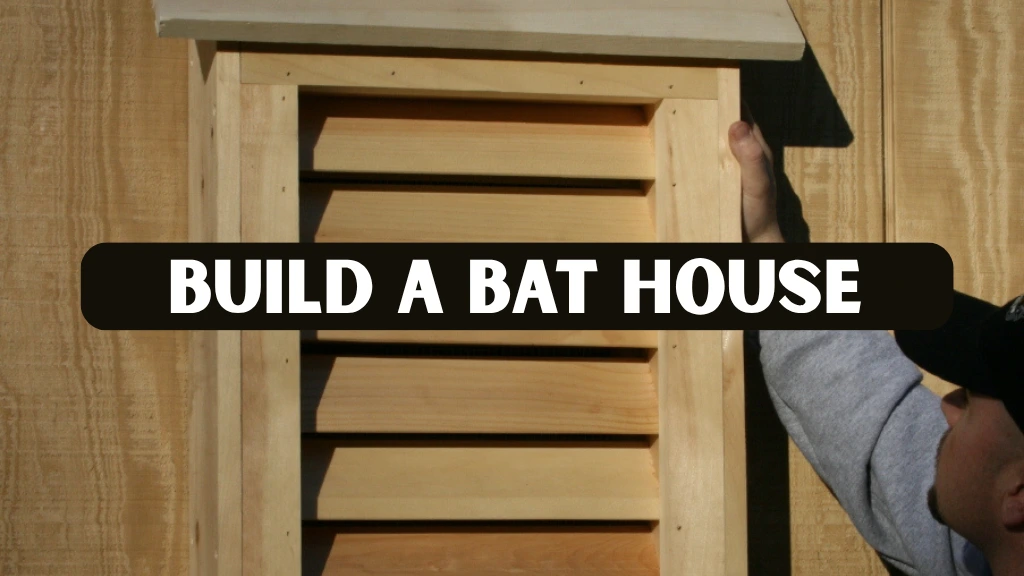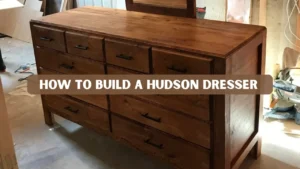Building a bat house is a rewarding woodworking project that not only enhances your outdoor space but also contributes to local wildlife conservation. Bats play a crucial role in controlling insect populations, making them valuable allies in maintaining a healthy ecosystem. If you’re interested in creating a bat house, this comprehensive guide will walk you through the process, from selecting materials to installation, with a focus on incorporating lathe-turned elements to add a unique touch to your creation.
Why Build a Bat House?
Bats are often misunderstood creatures, yet they provide immense benefits to the environment. When you build a bat house, you give them a safe roosting spot that helps reduce insect pests around your home naturally. In addition to insect control, bats play a vital role in pollination and seed dispersal, making them an important part of healthy ecosystems.
Constructing a bat house is both an eco-friendly choice and a rewarding woodworking project. It allows you to combine craftsmanship with conservation, creating a rustic structure that enhances your yard while supporting local wildlife. The joy of watching bats settle into a home you crafted makes the effort worthwhile and adds meaning to the project.
Materials and Tools Needed
When preparing to build a bat house, the first step is selecting the right materials. Cedar and untreated pine are among the best options, as they are naturally resistant to decay and create a safe habitat for bats. Cedar is particularly favored for its durability and long-lasting quality. Exterior-grade plywood can also serve well for back and roof panels thanks to its weather resistance.
For assembly, sturdy screws and nails are essential to hold the structure together securely. Adding wood glue at the joints provides extra reinforcement, ensuring the bat house withstands outdoor conditions for years. The exterior finish is equally important; a non-toxic stain or paint protects against weather damage. However, the inside chamber should remain untreated to avoid harmful fumes.
The woodworking process calls for a few reliable tools to achieve precision and safety. A saw is needed to cut the wood to accurate dimensions, while a drill helps create ventilation and pilot holes. Sandpaper smooths all surfaces, preventing bats from injuring themselves on sharp edges. For those looking to add custom flair, a lathe with tools like a spindle gouge, parting tool, and chuck can create grooves and decorative details.
Step by Step Instructions
This step-by-step section walks you through every action needed to Build a bat house that is safe and durable with lathe-crafted details. Read each step before moving to the next and gather all materials and tools first so the work flows smoothly.
Design and Dimensions
The design phase is critical. A functional bat house should be at least 24 inches tall, 14 inches wide, and about 4 inches deep. These dimensions provide adequate space for multiple bats while ensuring a sheltered and secure roosting environment. Careful measurements and planning will make the assembly process smoother and help prevent mistakes.
Cutting the Wood
Once the design is finalized, begin cutting your wood pieces. The back panel, ideally, should measure 24 by 14 inches, as it forms the main structural support. Two side panels of 24 by 4 inches each are then prepared to enclose the sides. The front panel, cut to the same size as the back, provides protection and forms the primary enclosure. A roof panel of about 16 by 14 inches offers an overhanging cover to shield the structure from rain. Additionally, a landing pad, approximately 4 by 14 inches, gives bats an entry point at the bottom of the house.
Lathe-Turned Details
To make the bat house unique and functional, consider incorporating lathe-turned details. Using a spindle gouge, carve shallow grooves along the interior of the back panel. These grooves act as climbing aids for bats, helping them grip surfaces easily. They also enhance ventilation, reducing the risk of excessive heat inside the chamber. Beyond function, decorative spindles or small turned dowels can be added to the landing pad or front panel. These embellishments are not strictly necessary but can make your bat house stand out as a personalized piece of craftsmanship.
Assembly
Assembly involves connecting the cut panels with screws or nails. Start by securing the side panels to the back panel, ensuring that the grooves are correctly aligned on the interior. Then, attach the front panel, leaving a small gap at the bottom. This gap is important because it allows bat droppings, known as guano, to fall freely, keeping the interior cleaner and more habitable. Finally, secure the roof panel at the top, making sure it slightly overhangs on all sides. This overhang protects the interior from direct rainfall and extends the overall lifespan of the bat house.
Step 5: Finishing Touches
The final stage is finished. Smooth out any rough or sharp edges with sandpaper to prevent harm to bats. Then apply a non-toxic, weather-resistant stain or paint on the exterior surfaces. Avoid using oil-based products or chemical-heavy finishes, as these can repel bats or even endanger their health. Stick to water-based, wildlife-safe finishes that provide durability without compromising safety.
Placement and Installation
Even the best-built bat house will fail to attract bats if it is not placed correctly. Placement is a crucial step, especially when you decide to build a bat house with the goal of attracting a colony. Ideally, the structure should be mounted at a height of 12 to 20 feet above the ground. This elevation keeps it out of reach of predators and provides a safe environment. The orientation is equally important: the entrance should face south or southeast to ensure maximum exposure to sunlight throughout the day. Bats prefer warmer interiors, and sunlight helps maintain the temperature they find comfortable.
Proximity to resources also influences success. Bats are more likely to inhabit houses placed near water sources like ponds, streams, or lakes. Additionally, the location should be away from bright artificial lights and heavy human activity. Mounting the bat house on a sturdy pole or on the side of a building provides stability. Ensure it is securely fastened so it does not sway in the wind, which could deter bats from roosting.
Maintenance Tips
Maintaining a bat house is essential for its long-term effectiveness. Conduct annual inspections, especially after harsh weather conditions, to check for damage. Look for cracks, loose panels, or any signs of deterioration. Early repairs will keep the structure safe and extend its lifespan. Cleaning is another important step. The interior should be cleaned once a year, ideally in late winter or early spring before bats return. A mild, non-toxic cleaner can be used, but ensure the house is thoroughly dried before reassembly.
Repairs and upkeep should not be overlooked. Small damages, such as cracks in the wood or loose roof panels, can become serious hazards if left unattended. Proper maintenance ensures bats remain safe and that the bat house continues serving its purpose for many years.
Conclusion
Build a bat house as a project that combines woodworking creativity with ecological responsibility. From selecting safe, natural materials to incorporating thoughtful lathe-turned details, every step adds to the house’s functionality and aesthetic appeal. Correct placement and proper maintenance are equally vital to ensure success. Once bats take up residence, you will enjoy the dual benefits of natural insect control and the satisfaction of contributing to wildlife conservation.
By following this detailed guide, you not only gain woodworking experience but also create a lasting impact on your local ecosystem. A well-crafted bat house will serve as a safe haven for bats, enriching biodiversity and supporting a healthier environment for years to come.
FAQs
How long does it take to turn a bat house?
Depending on your skill level and the complexity of your design, a bat house generally takes four to six hours. Beginners may take slightly longer, especially if incorporating decorative lathe details.
Can children participate in building a bat house?
Yes, children can definitely be involved. They can assist with sanding, painting, and even light assembly under adult supervision. It’s a great way to teach them about wildlife conservation and basic woodworking.
What type of wood ensures the longest lifespan?
Cedar is the top choice due to its natural resistance to decay and insects. Untreated pine also works well but may require more frequent maintenance to preserve its quality over time.
How do I encourage bats to move in?
Location is the key. Place the bat house at the proper height, ensure it receives plenty of sunlight, and mount it near a water source. Patience is necessary; sometimes, it can take months or even a year before bats discover and inhabit the house.
Is it possible to sell handcrafted bat houses?
Yes, bat houses crafted with care can be sold, particularly if they feature unique designs or lathe-turned elements. Highlighting their functionality and environmental benefits will appeal to eco-conscious consumers.




